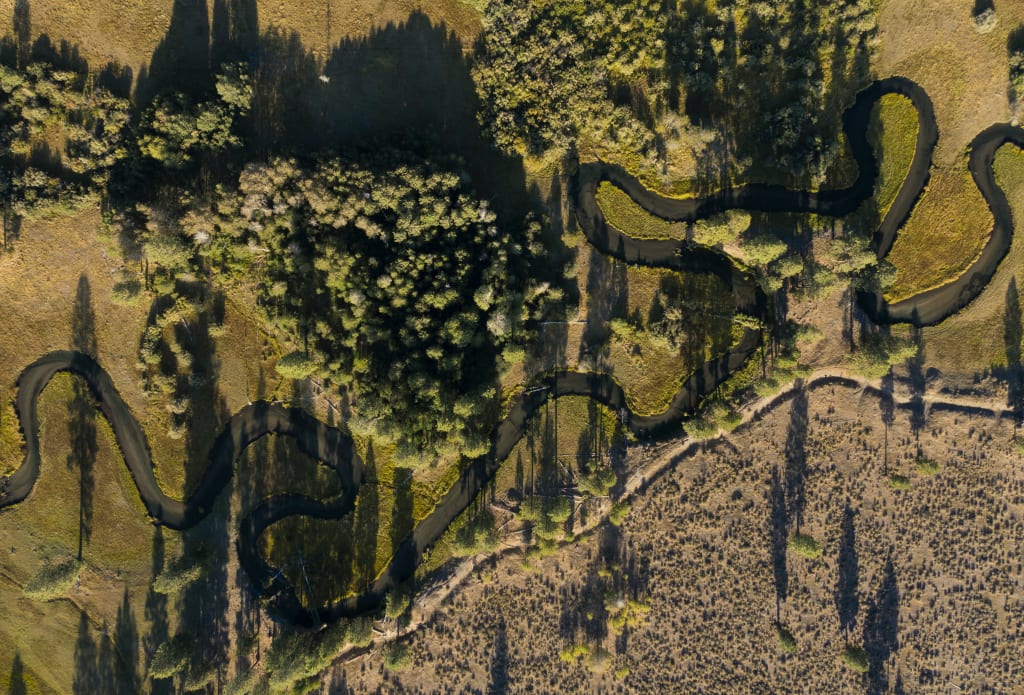
Biodiversity would be found to be concentrated in the areas of tectonic upheaval if we could turn back the clock on the history of species around the globe and fast-forward hundreds of millions of years to the present.
Since altering landscapes tend to separate and diversify species through time, tectonically active areas like the Himalayan and Andean ranges are particularly rich in flora and fauna.
However, biodiversity can also thrive in some geologically less active areas, where tectonic activity hasn't moved the earth for thousands of years. A good example is the Appalachian Mountains, which have not had much tectonic activity in hundreds of millions of years but are still a significant hotspot for freshwater species.
The richness of animals in tectonically inactive locations may now be shaped by a geological process, according to a recent MIT study. The researchers claim that river erosion can promote biodiversity in these older, more sedate settings in a publication that will publish in Science.
A FISH IN A TREE
The new research developed out of Stokes' doctoral work at MIT, where she and Perron investigated links between geomorphology and biology.
Geomorphology is the study of how landscapes change through time.
They stumbled upon Thomas Near's research at Yale, where he looks at the lineages of freshwater fish in North America. To demonstrate how and when specific species evolved and diverged from one another, Near analyses DNA sequence data acquired from freshwater fishes in various parts of North America.
Stokes collected green fin darter tissue samples from Near's sizable Yale collection as well as from the field with assistance from TVA colleagues in order to look into the causes of this pattern.
Then she matched each fish's genes to every other fish in the dataset after analyzing DNA sequences from across the complete genome. Based on the genetic similarity between fish, the scientists then constructed a phylogenetic tree of the green fin darter.
They deduced from this tree that fish in one stream were more closely linked to one another than fish in other tributaries. Additionally, fish from nearby tributaries tended to be more similar to one another than fish from farther away tributaries.
"Our inquiry was whether a geological mechanism could have taken this single species and gradually divided it into various, genetically distinct groups." Says Perron.
A shifting environment
Stokes and Perron began to notice a "tight correlation" between the habitats of green fin darters and the kinds of rocks they are found in.
In particular, the southern half of the Tennessee River Basin is largely composed of metamorphic rock, where the species is abundant, as opposed to the northern half, which is composed of sedimentary rock, where the fish are not present.
In addition, they noticed that rivers flowing through metamorphic rock are often steeper and more narrow, which produces greater turbulence, a quality that green fin darters appear to appreciate.
The research team pondered: Could the distribution of green fin darter habitat have been influenced by the types of rocks that made up the land changing over time as rivers eroded into it?
The researchers created a model to mimic how a landscape changes as rivers erode through various types of rock to test this theory.
They ran the simulation backward to see how the same region may have appeared millions of years ago when more metamorphic rock was exposed and supplied the computer information about the rock types in the Tennessee River Basin today.
After moving the model forward, they noticed how the amount of metamorphic rock exposed decreased over time.
They paid particular attention to the locations and times when tributary connections crossed into non-metamorphic rock, obstructing the passage of fish between those rivers.
They matched the evolutionary tree of diverging green fin darters to a simple timeline of these blocking events.
The two were strikingly similar: The fish appeared to divide into distinct lineages in the same sequence as when their different streams split off from the others.
It indicates that it is likely that lineages of the green fin darter became isolated from one another as a result of erosion through various rock levels, according to Stokes.
The Terra Catalyst Fund and the U.S. National Science Foundation's AGeS Geochronology Programme and Graduate Research Fellowship Programme helped fund a portion of this study.
Stokes was given financial assistance by the Hugh Hampton Young Fellowship and the Martin Fellowship for Sustainability while he was a student at MIT.
About the Creator
Rio sloth
Enjoy the life. Learn Everything. Read daily, improve your knowledge.






Comments
There are no comments for this story
Be the first to respond and start the conversation.